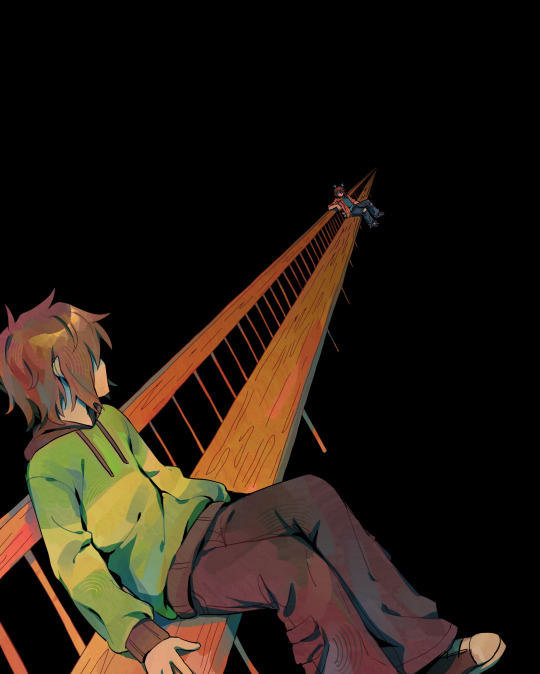Text
I saw this play a while back called "Pride and Prejudice* (*sort of)", which was a comedic retelling of the events of P&P by five female servants. (Who all worked in the Bennet household, I believe? Cannot remember the exact setting at this point.)
It was very much in an "low-budget improv troupe" style (though it was not actually improv), so Mr. Bingley's exaggerated "love at first sight" meeting with Jane happened while he had his hand stuck in a Pringles can. A karaoke machine made multiple appearances. If you were looking for historical accuracy or a perfect examination of the social nuances, this was not at all the play to watch, but it was pretty amusing, and it was interesting to think about P&P from the perspective of servants who may have only heard about certain events through gossip. Or who might just be mocking certain figures because they don't like them very much. At one point at a party, a tipsy Lydia got her hands on one of the soldiers' guns and fired it at the ceiling while people screamed. It was VERY silly.
Because there were only five actresses, they were switching between roles as needed, putting jackets or colorful dresses over their plain white dresses. The female servant who played the dramatic Mrs. Bennet also played the stiff Mr. Darcy. Another of the female servants played both Bingley siblings (Charles and Caroline) and also Charlotte Lucas, I think? Another played Mary, Lydia, and Mr. Collins, and also Mrs. Gardiner, I believe. Another played Jane, Georgiana Darcy, Mr. Wickham, and Lady Catherine, and so on. The female servant who played Elizabeth played her most of the time. The quick changes and mannerism shifts were quite funny.
But my favorite part may have been that Mr. Bennet was played by a chair. It was a comfy chair with its back to the audience and a newspaper propped up so that someone might be sitting there reading it, and at one point one of the servants went over to the chair to light a pipe, so that smoke rose from behind the chair. Characters talked to the chair sometimes, but the chair never talked back.
So, at one point, Mrs. Bennet was yelling and moaning about how the family was ruined. I think that Lydia, whom the embarrassing and overbearing Mrs. Bennet had been actively encouraging to be silly earlier, had run off with Mr. Wickham here. And Mrs. Bennet cried out, "OH, MR. BENNET, DO SOMETHING!!!"
And everyone on stage looked towards the chair with its back turned, which was fairly obviously empty, and which of course couldn't do anything by itself, because it was a chair. Dead silence again.
And then Mrs. Bennet went back to wailing and crying, while her daughters (Jane, Lizzy) patted her awkwardly on the back. And then I think the another actress came in as a servant to announce someone's arrival or something, moving the comedic retelling along. And that's probably what I remember best out of the entire play: Mr. Bennet could be effectively played by an empty chair with its back turned. It was hilarious.
5K notes
·
View notes
Text
Someone on Reddit keeps getting recommended the Jane Austen subreddit despite knowing nothing about Jane Austen, so they posted an Ask Me Anything. Best response so far:

Sorry JA, no longer a truth universally acknowledged.
42K notes
·
View notes
Text
i feel very stongly that elizabeth 100% would have sworn darcy to eternal secrecy about the fact that he had already proposed once unsuccessfully when she accepted, solely bc you just KNOW mr collins' smug ass would be like, "oh ho ho! huh! so apparently it IS the usual with young ladies to reject the addresses of the man whom they secretly mean to accept when he applies for their favor! hm! interesting!" and then she would be honor-bound to leap over lady catherine's dining table and strangle him
7K notes
·
View notes
Text

Can someone help me identify this bird?? I CANNOT figure out what this creature is and it's driving me insane
719 notes
·
View notes
Text
This is by far the most incredible thing I've ever seen. Put the sound on and watch to the end, I promise it's worth it.
2K notes
·
View notes
Text
17K notes
·
View notes
Text
accidentally soaked a gopher today... not a joke or innuendo. Poured a five gallon bucket over a tree where our irrigation system is shut off and this thang hopped out of the ground.

He's big mad now too


21K notes
·
View notes
Text


Like many bug species, the white beach tiger beetle is easy to overlook for most people. They’re remarkably fast and can dart across the sand so swiftly you’ll lose them in the blink of an eye. As you can imagine they’re very difficult to photograph (and even harder to film- I’ll post evidence of my attempts later) so I’m quite pleased I finally got some good photos of this species.
These beetles are even easier to overlook when they start life in their larval state, tiny and worm-like. Despite their unremarkable appearance, beach tiger beetle larvae do something that almost no other animals do. Like lots of incredible phenomena in the world of science it was discovered entirely by accident!
A graduate student was taking some time off from her studies with a trip to the beach on Cumberland island in Georgia, USA. After she returned from her vacation she was excitedly telling her advisor the neat things she’d seen at the beach, including the Tiger Beetle larvae rolling down the beach. Her advisor was confused… beetle larvae “rolling”? These larvae were known to hide in tiny tunnels along the beach but their behavior was considered to be almost entirely sedentary; the advisor was baffled by his student’s descriptions of what she’d seen. There was only one thing to do- they went back to the beach.
Intensive study of tiger beetle larvae on that beach confirmed what the student had seen. In order to escape predators, a tiger beetle larva could be observed leaping upwards into the wind, curling into a circle, and catching a draft to literally roll like a hula hoop down the beach at high speed. This movement (where the animal rolls forward along a central axis) is called wheel locomotion and true examples of it are amazingly rare in the animal kingdom.
Here’s a Video that discusses this discovery and includes footage of the leaping larvae in action.

Whenever I see tiger beetles on the beach I think of this story and am reminded to embrace my curiosity in every way I can! Noticing the things that other people overlook can become a superpower if you let it.
774 notes
·
View notes
Text
Meat-Eating Caterpillars: less than 1% of all known lepidoptera (moths and butterflies) are carnivorous, and even fewer are known to hunt and kill their prey; these are just a few of the exceptions

Above: a carnivorous pug moth caterpillar, Eupithecia orichloris, ambushing a fly
Lepidopteran predators are extremely rare, but they do exist. Some of the most interesting examples include the carnivorous pug moth caterpillars of the genus Eupithecia, the ant-eating casebearer, the Hawaiian snail-eating moth, and the bone-collector caterpillars of the genus Hyposmocoma. Curiously, almost all of the species on this list are endemic to Hawaii.

Above: Eupithecia orichloris
The carnivorous pug moth, Eupithecia orichloris, is probably the most famous predatory caterpillar in the world, thanks to the striking and unusual method by which it captures its prey -- this species is an ambush predator that often disguises itself as a twig and then pops up out of nowhere, violently plucking its prey from the foliage. Eupithecia is the only lepidopteran genus that is known to contain ambush predators, which makes this behavior seem even more striking.
The ant-eating casebearer, Ippa conspersa, is another carnivorous caterpillar that feeds on ants and other insects (both as a predator and as a scavenger). This species uses silk, sand, and other fine debris to build a flat, peanut-shaped "shell" around its body, and the "shell" acts as a kind of camouflage, allowing the caterpillar to sneak into ant nests and hunt.

Above: the ant-eating casebearer and its unique "shell"
As its name implies, the ant-eating casebearer often feeds on ants, but it has also been known to eat cockroaches and other insects.

Above: an ant-eating casebearer feeding on a cockroach
Hyposmocoma molluscivora, commonly known as the Hawaiian snail-eating moth, is a casebearing caterpillar that feeds on live snails. It uses strands of silk to immobilize its prey, tethering the snail in place so that it can climb into the victim's shell and feed on the soft flesh within. The caterpillars of this genus are the only lepidopterans that are known to feed on molluscs; all of the other predatory caterpillars feed on arthropods (insects and arachnids).

Above: this photo shows a Hawaiian snail-eating moth using strands of silk to hold its prey in place
The genus Hyposmocoma also contains the predatory "bone-collector" caterpillars, which cover themselves with the body parts of other insects and arachnids, often scavenging the leftover pieces from spiderwebs. They carefully trim each piece of exoskeleton and then arrange them all together onto a portable silk mesh.
The caterpillars often live side-by-side with spiders, as they opportunistically feed on the insects that they find trapped in spiderwebs, and their macabre body ornaments likely serve as camouflage; they allow the caterpillar to avoid being detected or attacked by spiders.

Above: a bone-collector caterpillar covered in the body parts of other insects, including a large weevil head that is clearly visible near the center, several ant heads, a fly's leg, the abdomen of a bark beetle, a wing, and several pieces of antennae, among other things
Sources & More Info:
Journal of the Lepidopterists' Society: Predatory and Parasitic Lepidoptera
GeoJournal: Behavior, Biogeography, and Conservation of Eupithecia in the Hawaiian Islands
Korean Journal of Applied Entomology: The First Record of the Myrmecophilous Tineid Moths of Genus Ippa in Korea
Nature: Caterpillars Eat Snails Out of House and Home
Science: Web-Spinning Caterpillar Stalks Snails
NBC: Hawaiian Caterpillars Hunt like Spiders
National Geographic: This Camouflaged Critter Wears Severed Insect Body Parts like a Coat
Scientific American: Carnivorous "Bone Collector" Caterpillars Wear Corpses as Camouflage
Science: Hawaiian Caterpillar Patrols Spiderwebs Camouflaged in Insect Prey's Body Parts
#carnivorous caterpillars#the bone-collector is so metal#looked up the Harvester and its wikipedia page had a link to a carnivorous moth#which really looks the part - all black#(Epipyrops exigua)
6K notes
·
View notes
Photo

public service announcement
248K notes
·
View notes
Text
It wimdy
81K notes
·
View notes
Text

My, my… what big teeth you have! Meet the Pacific stargazer (Astroscopus zephyreus). Found in coastal waters from California to Peru, this fish is an ambush hunter. Spending most of its life buried beneath the sand, the stargazer’s upturned face is an adaptation that allows it to see even when most of its body is concealed. What’s more? This species is capable of stunning prey with electrical shocks of up to 50 volts! Photo: alboertoalcala, CC BY 4.0 iNaturalist
8K notes
·
View notes






